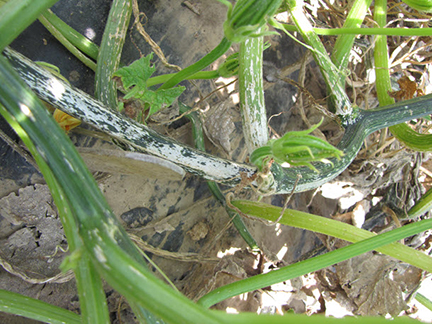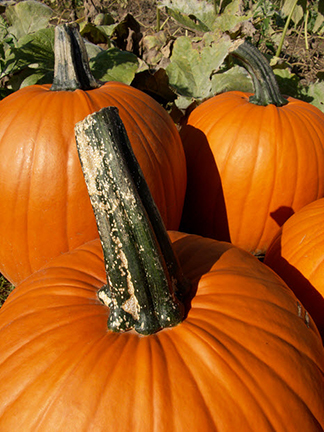I have observed this disease in several pumpkin fields this year. It is not clear to me why this disease seems to be more widespread compared to recent seasons. However, it makes sense to review Plectosporium blight here.
Plectosporium blight is usually not a serious disease. The occurrence of this disease is usually sporadic. However, when it occurs, it can cause yield loss if left uncontrolled. Older literature may list this disease as Microdochium blight. Plectosporium blight can be recognized from the light tan lesions on stems and leaf petioles. Lesions may also occur on the fruit, although these symptoms are less common. Yield loss is most often caused by lesions on the stem adjacent to the fruit—the pumpkin handle. Yellow squash and zucchini squash are also affected. Lesions are often individually spindle shaped. When these lesions occur in large numbers they can give a light gray or white appearance to the foliage. This disease may be managed through a combination of cultural and fungicide treatments. Crop rotations of 3-4 years and fall tillage will help keep the crop residue to a minimum. A regular contact fungicide program will also help to keep Plectosporium blight in check.
This article was originally published on the veggiediseaseblog.org on August 24, 2015.

Plectosporium blight may cause the stems and petioles of pumpkins plants to appear white or light brown when numerous spindle shaped lesions coalesce.
